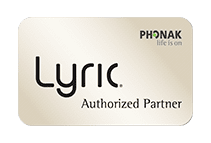Common Mistakes when buying Hearing Aids – 3. Selecting the Wrong Style of Hearing AidHow could this even be possible you may ask?You would be surprised at just how many people order the smallest hearing aid in the store, just because it’s the most invisible or get sucked in by two for one deals. It is really important to buy the right style of hearing aid for your needs.
Sometimes “smallest” is not best – There are many reasons to select a slightly larger style of device, not limited to the following:
- Larger components required to suit hearing loss
- Additional space for more sophisticated microphones
- Wireless capabilities to have devices work as a pair or link to additional equipment such as tv’s and phones
- Easier handling
It is best to select style of hearing aid that can hold all the right technology to meet your hearing needs in the most situations possible. It’s also essential that the hearing aid has room for further adjustment if your hearing levels change, which will be likely throughout their usable lifetime.Click Here To Download Your Free E-bookHere is a guide to the hearing aid styles and some of their suitability’sOptimising your hearing may take time so ensure you visit a specialist that is happy for you to return for adjustment appointments.
Recent reports have suggested that the success with hearing aids is largely dictated by the expertise of the hearing aid specialist and not the particular hardware.
A well tuned mid-range hearing aid will significantly outperform a top of the range device that has been badly tuned.
Look for specialists that encourage you to test their solutions and give the freedom to take as much time as you like.IIC – Invisible in the canal
- Excellent for concealing the hearing aid deep inside the ear canal.
- Can comfortably handle up to moderate hearing losses but can struggle with severe or profound losses.
- Limited to single microphone technology and unable to link wireless to a partner device in your other ear.
ITE – In the ear
- Can be made with directional microphones for superior performance in noise.
- These handle down to severe hearing losses comfortably and some can cover up to profound losses.
- Often visible in the ear but have the benefit of nothing “over the ear” so can work well with glasses.
- Wireless abilities to link with partner hearing aids and other wireless solutions.
RITE – Receiver in the ear, or slim tube behind the ear
- Can be made to look very discreet and match hair colour/glasses legs.
- Space for directional microphones for superior performance in noise.
- Can handle down to profound hearing loss levels.
BTE – Behind the ear
- The most powerful hearing solution available.
- Can cover the most challenging ranges of hearing losses.
- Extremely durable and easy to handle.
Download your free e-book to find out more about the 7 common mistakes people make when purchasing hearing aids:[uncode_block id=”51138″ inside_column=”yes”]






